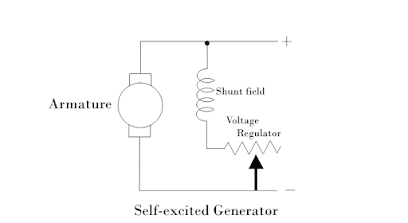DC Generator: Exploring its Working Principle and Classifications
Direct
Current (DC) generators play a pivotal role in the generation of electrical
power by converting mechanical energy into electrical energy. Understanding the
working principle and classifications of DC generators is essential for
comprehending their significance in various applications. In this article, we
will delve into the fundamental working principle of DC generators and explore
the different classifications that aid in categorizing these crucial devices.
Working Principle of DC Generator
DC
generators, also known as dynamos or dynamos-electric machines, operate based
on Faraday's law of electromagnetic induction. This law states that a change in
magnetic flux within a closed circuit induces an electromotive force (EMF) or
voltage across that circuit. The primary components of a DC generator include a
rotor (armature) and a stator with field windings.
1.
Faraday's Law: As the rotor, typically mounted on an axle, rotates within the
magnetic field created by the stator's field windings, a varying magnetic flux
is produced. This changing flux induces a voltage in the armature windings, in
accordance with Faraday's law.
2.
Commutator and Brushes: The commutator, a split-ring mechanism, is affixed to
the rotor and functions as a switch. It reverses the direction of the current
in the armature windings every half-turn to ensure a unidirectional flow of
current in the external circuit. Brushes maintain physical contact with the
commutator, facilitating the transfer of current.
3.
Armature Windings: The armature windings are positioned on the rotor and serve
as conductive paths for the induced current. These windings consist of multiple
coils connected in series or parallel to amplify the generated voltage and
current.
Classifications of DC Generators
DC
generators can be categorized based on several criteria, including their field
winding connection, excitation method, and construction. The following are the
common classifications:
1. Separately Excited DC Generator: In this type, the field winding is
connected to an external power source independent of the generator's output.
This ensures a consistent magnetic field and a controlled output.
2.
Self-Excited DC Generator:
- Series Wound: Here, the field winding is
connected in series with the armature winding. These generators provide high
starting torque, making them suitable for applications requiring heavy initial
loads.
- Shunt Wound: In this configuration, the field
winding is connected in parallel with the armature winding. Shunt-wound
generators offer stable voltage output and are commonly used in general
electrical applications.
3.
Compound Wound DC Generator:
- Cumulative Compound: This type combines
both series and shunt winding characteristics, resulting in a generator with
strong voltage regulation.
- Differential Compound: These generators
possess the advantages of both shunt and series wound generators, making them
suitable for applications with varying loads.
Direct Current generators remain integral to numerous industries, from powering small electronics to large-scale industrial operations. By grasping the working principle and classifications of DC generators, one can appreciate their versatility and importance. Whether it's the simplicity of a self-excited generator or the precision of a compound-wound generator, each classification serves specific needs within the realm of electrical power generation.







0 Comments